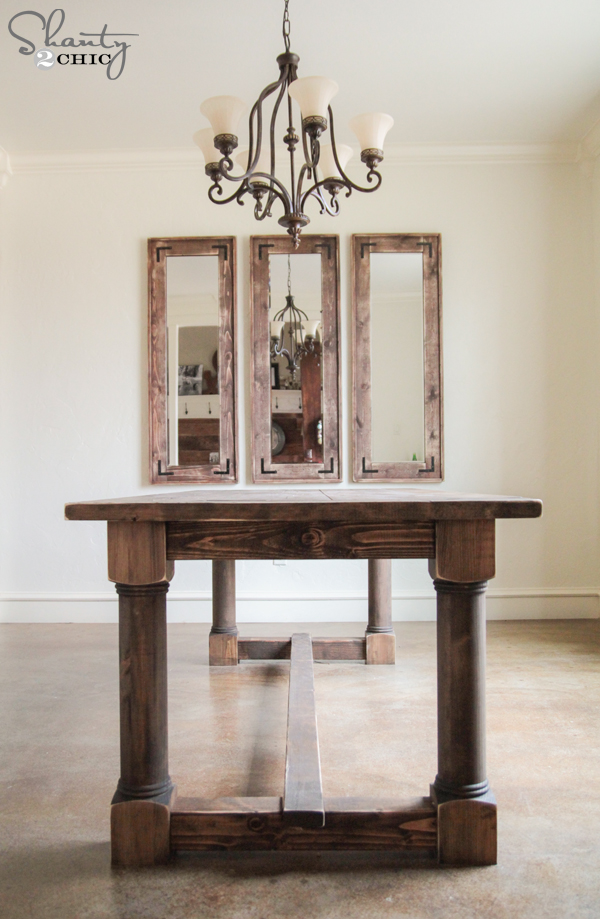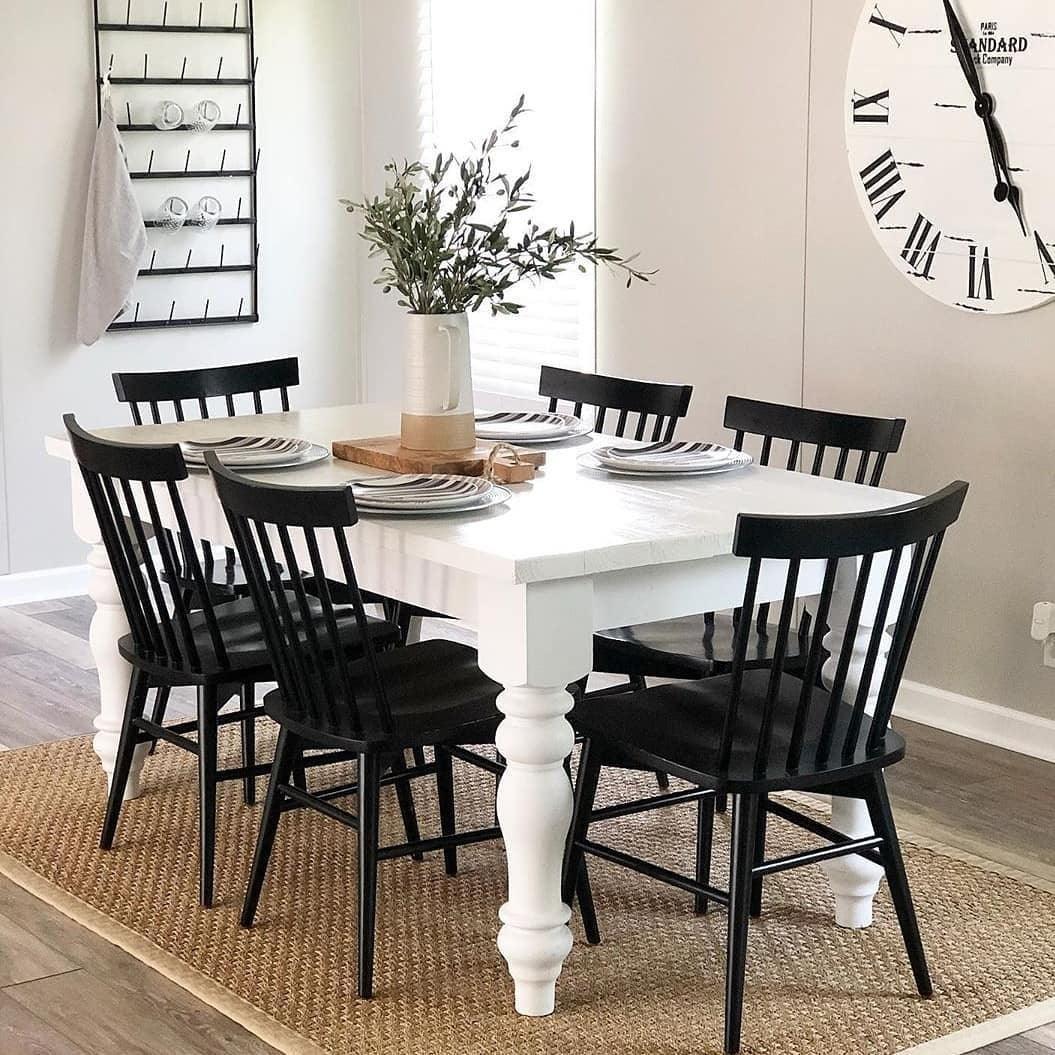Unique Dining Room Table Legs That Will Elevate Your Dining Area
Unique Dining Room Table Legs That Will Elevate Your Dining Area
Blog Article
From Traditional to Modern: Locate the Perfect Dining-room Table Legs for Your Style
While classic styles such as cabriole and transformed legs evoke a feeling of classic elegance, contemporary designs like barrette and geometric options provide a chance for striking aesthetic interest. As you take into consideration these aspects, the inquiry continues to be: how can you perfectly incorporate these diverse leg styles to produce a harmonious eating experience?
Recognizing Table Leg Styles
The variety of dining-room table leg styles can substantially affect both the aesthetic appeals and performance of the area. Each leg style contributes distinct sensible features and aesthetic aspects, dealing with diverse style preferences and use needs. Comprehending these designs is critical for picking the ideal dining table that lines up with your general interior design vision.
As an example, conical legs provide a tidy, classic look that can boost a space's beauty, while pedestal bases provide security and make the most of legroom, making them perfect for smaller spaces. Barrette legs, a trademark of mid-century modern layout, introduce a commercial flair, permitting a ventilated, open feel. Likewise, trestle legs evoke rustic charm, supplying robust assistance and a feeling of eternity.
Furthermore, the choice of products plays a significant role. Wood legs can bring warmth and texture, whereas metal options frequently share a smooth, modern vibe. Eventually, understanding table leg designs is important for developing a cohesive eating area that mirrors personal style while ensuring functionality and convenience. By thoughtfully taking into consideration these aspects, you can boost both the useful and aesthetic appeal of your dining area.
Standard Table Leg Options
When picking dining room table legs, traditional choices usually embody timeless beauty and craftsmanship. These layouts mirror an abundant heritage and a dedication to quality, making them suitable for those who appreciate classic appearances.
Among the most famous typical leg designs is the cabriole leg, identified by its elegant curved shape. This style commonly includes ornamental makings and is most generally discovered in Queen Anne and Chippendale furniture. One more prominent option is the turned leg, which boasts a series of smooth, rounded shapes that provide a classic look while preserving stability.
Additionally, the straight leg, while easy, supplies a basic and tough framework that can blend perfectly with a range of tabletop styles. For those attracted to ornate outlining, claw-and-ball feet legs stimulate a feeling of majesty and can act as a sensational focal factor in any dining space.
Lastly, stand bases, although not strictly legs, provide an alternative conventional option that permits for adequate legroom and can be magnificently carved. Each of these standard leg styles adds to the overall setting of a dining-room, marrying feature with visual charm.

Modern Table Leg Layouts
Modern table leg styles provide a Discover More Here diverse series of styles that stress innovative products and clean lines. These styles frequently focus on performance while serving as striking prime focus within an eating area. Minimal looks are common, with legs crafted from products such as metal, glass, and engineered timber, which contribute to a modern and ventilated feel.
One prominent layout is the hairpin leg, identified by its slender, tapered framework that provides security without overwhelming the tabletop (dining room table legs). This design is often discovered in mid-century modern-day furniture and can easily enhance various table forms. An additional trend is making use of geometric forms, where legs might take on unbalanced or angular forms, adding aesthetic interest and a touch of creativity

Mixing Designs for One-of-a-kind Rooms
Commonly, house owners look for to create distinct dining spaces that mirror their individual style by blending numerous design components. This technique enables the incorporation of diverse aesthetics, leading to a harmonious yet unique environment. For example, combining a rustic wooden table with smooth, contemporary steel legs can produce a captivating contrast that boosts the area's general appeal.
Furthermore, incorporating vintage table legs with modern tabletops can evoke a feeling of history while preserving a contemporary perceptiveness. Such combinations not just display private preference yet additionally encourage creative thinking, enabling homeowners to curate an area that feels both individual and inviting.
Color plays an important duty in this blending procedure; selecting table legs that enhance or contrast with the existing shade system can enhance aesthetic passion. Whitewashed legs can soften the boldness of a dark table surface, creating a well balanced aesthetic.
Tips for Selecting the Right Legs
Picking the right table legs is essential for accomplishing both performance and aesthetic allure in your dining area. Begin by taking into consideration the total style of your area. Traditional settings benefit from legs that feature complex carvings or turned styles, while contemporary spaces might ask for streamlined, minimalist styles.
Next, assess the elevation and security of the legs. dining room table legs. Standard dining tables range between 28 to 30 inches in height, so guarantee the legs match this dimension for convenience. In addition, durable products, such as hardwood or steel, can enhance stability and long life
Review the leg form too-- try this alternatives consist of straight, tapered, or stand layouts. Straight legs offer a timeless appearance, while conical legs can include a touch of sophistication. Pedestal bases supply enough legroom and are optimal for smaller sized areas.
Final Thought
In recap, choosing the optimal eating room table legs requires mindful consideration of both contemporary and traditional designs. By balancing leg design, height, and product with the general decor, a cohesive and welcoming environment can be like this achieved.
The range of dining space table leg designs can considerably influence both the visual appeals and capability of the space. Inevitably, recognizing table leg styles is important for developing a cohesive eating location that shows personal design while making certain usefulness and convenience.One of the most iconic traditional leg styles is the cabriole leg, identified by its graceful rounded form. Straight legs provide a classic appearance, while conical legs can add a touch of sophistication.In recap, selecting the perfect eating room table legs needs cautious factor to consider of both conventional and contemporary styles.
Report this page